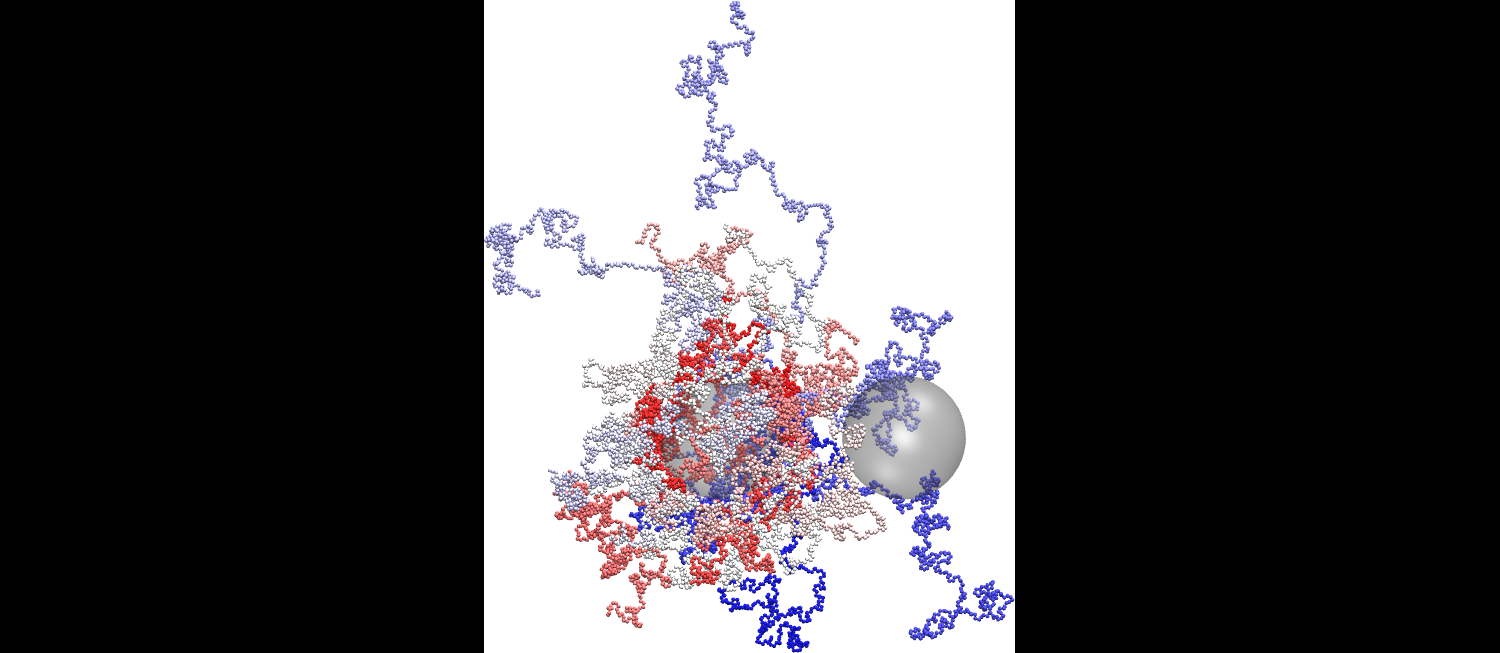Theory: Thermal Conductivity and Interparticle Forces in Colloidal Systems

3D X-Ray tomography structure of carbon xerogel (left) as well as the calculated temperature distribution within in a steady temperature gradient (right).
We are interested to understand the mictrostructure and porosity as well as their influence on the thermal conductivity of meso- and microporous materials. In particular we investigate the influence of the pore size distribution and geometry as well as the influence of the connecting “neck” regions in pearl-necklace type microstructures. The conductivity within the pores depends on the local mean free path of the gas depending on the gas-gas molecular collisions as well as the gas molecule – solid pore surface collisions.

Snapshot of model, coarse grained PVA polymers adsorbed on a nanoparticle with 8mm diameter in the presence of a second nanoparticle.
Another area of theoretical work done in the group is the study of interparticle forces in nanoparticle suspensions or sols. These systems form the first step of many of the sol-gel synthesis routes. While the influence of the small size of nanoparticles on different material properties, such as the band gap, magnetic properties etc., has been studied thoroughly, little work has been devoted to how their size influences their colloidal behavior. The predominantly used DLVO theory for inter-particle interactions loses its validity for small particle sizes. Consequently improved colloidal models for nanoparticles are needed. In addition to better understand the behavior of organic-inorganic composite sols (such as the pectin- or chitin-silica precursor sols) the adsorption of polymers on nanoparticles and the influence of the ensuing sterical interactions currently being investigated.

Dr. Sandra Galmarini
PhD Materials Science_ Atomistic Simulation of cementitious systems, EPFL
-
Share
